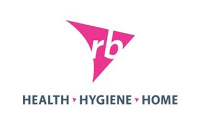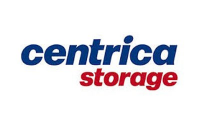Bioenergy Carbon Capture and Storage (BECCS)
Drax is the largest decarbonisation project in Europe, having converted two thirds of its generating units to use biomass as an alternative to coal.
At present, Drax is running multiple Bioenergy with carbon capture and storage (BECCS) pilot projects and investigating how Drax Power Station can enable revolutionary technologies to become the world’s first carbon-negative power station and facilitate both carbon capture in the North of England and the economic production of blue hydrogen.
3 min read

Carbon Capture and Storage (CCS) is key to unlocking negative emissions from power generation. It can remove over 90% of emissions from fossil fuel generation, and when combined with bioenergy can produce negative emissions. Drax’s project would propel the Drax Power Station to become the first site to deploy dedicated biomass with CCS in the world. This in turn could lead to the creation of the world’s first carbon-negative power station with the potential to deliver up to 16 MtCO2 of negative emissions per annum.
CCS is considered critical to meeting net zero targets. The availability of CCS CO2 transport infrastructure passing through the Humber industrial cluster from Drax to the east coast would enable other industrial and power generation sites to tie-in to this pipeline. The captured CO2 would then be stored deep under the seabed in the Southern North Sea.


The missing link
Negative emissions technologies such as BECCS are considered to be the missing link to achieving a net-zero emissions target in the UK. These technologies will be vital to remove residual positive emissions remaining from difficult-to-decarbonise sectors of the economy such as aviation and agriculture.
The CCS infrastructure would also facilitate blue hydrogen production near the Drax Power Station via the conversion of natural gas in an autothermal reformer (ATR) with annexed carbon capture. A previous study by Element Energy estimates that, by 2030, this could lead to the production of up to 13 TWh/years of blue hydrogen for industrial use and up to 165 TWh/year for power generation.
Blue hydrogen production
CCUS
Sub-seabed carbon storage
Carbon negative

“
Installing carbon capture technology at Drax could turn it into the world’s first carbon-negative power station”
Drax’s vision:
Deploying BECCS at scale:
- BECCS can generate clean electricity and, at the same time, negative emissions.
- Installing carbon capture technology on Drax Power Station’s biomass units could, by 2027, turn it into the world’s first carbon-negative power station. The negative emissions could assist in offsetting the emissions of other sectors in the UK that are unable to reach net-zero.
Establishing a regional carbon dioxide transport and storage network:
- Allowing businesses across the region to safely transport and store their emissions under the Southern North Sea as an alternative to releasing them into the atmosphere.
- Establishing the Humber industrial cluster as a world leader, creating new jobs and investment opportunities in the region.
- Unlocking a cutting-edge hydrogen economy by providing a route to decarbonised hydrogen production. The low-carbon hydrogen produced can be used to decarbonise industry, power, heat and transport across the North of England.
This project is part of the Zero Carbon Humber partnership.
Contact
Invest Humber: Clean Growth in the UK’s Energy Estuary was created and is managed by Future Humber.
Future Humber promotes the region's distinctive strengths to the widest audience and accelerates opportunities to unlock the potential in the Humber.
Diana Taylor is the Managing Director of Future Humber. She is responsible for guiding the vision and strategy to market the Humber to the UK, Europe, and beyond. Diana works with partners and stakeholders to build the voice of the region and enable businesses and organisations within the Humber to succeed and grow.
If you have a question about Invest Humber or would like to find out more about any of the projects included on the website, you can contact Diana below.









